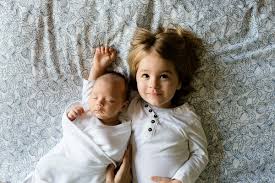Types of Birth Order In Psychology are discussed.Empirical studies of birth order have involved a search for correlates between personality variables and ordinal position in the family. Birth-order research has a disconnected character, being almost always atheore-tical, so that many conflicting findings appear in the literature.
The typical research procedure is to ask for birth-order. without accounting for variables in the order itself such as age. separation between siblings, sex differences, abortions, miscarriages, or still-born. The reported findings are often inconclusive because the researchers do not compare persons born in similar positions. The most critical need is that a birth-order research model be established. Most researchers do not view birth order as a determinant of personality, but believe that the order itself describes an influencing environment for the individual.
The following represent empirical studies reporting birth-order differences statistically significant at or beyond the 0.05 confidence level. More than 3000 birth-order research studies were examined, but only a very small sample of published reports can be summarized. Research findings suggest five psychological positions, and this review is prepared along these divisions: first-, second-, middle-, last-, and only-born child in the family.
Types of Birth Order
FIRST-BORN
First-borns have better high school grades than the later-born students; are most vulnerable to stress; attend college in greater number than their later-born peers; and show the greatest representation among problem children.
SECOND-BORN
The second-born child represents a distinct birth-order category. Such children manifest greater dependency behavior than either first- or later-borns; seek more adult help and approval than first- or later-borns; spend more time in individual activity; are generally more talkative; and express more negative affect than other subjects. Many seemingly effeminate boys are first- or especially second-born. Second-borns in same-sex dyads appear to imitate the same-sex parent more than their older sibling.
MIDDLE-BORN
Middle children tend to be better adjusted emotionally if from large families; have the greatest feeling of not belonging; are most sensitive to injustices and feelings of being slighted; are most successful in team sports; are most likely to study music and languages and to practice the creative arts; have aesthetic interests; and are overrepresented among actors.
LAST-BORN
Last-borns affiliate with a fraternity more than first-borns and only children; appear to have the highest self-esteem; are best adjusted if from large families; have the greatest overrepresentation of psychiatric disorders if from small families; and are most likely to have the lowest 10 and to experience school failure. Later-born females tend to have significantly lower self-esteem than expected.
ONLY-BORN
Growing up without siblings has no unusual impact on personality development. Only-boms are overrepresented in regard to emotional disturbance, and the only son has the strongest need for nurturance. Only-borns appear to assume less responsibility for success than do first- or later-borns; are most likely to be referred for clinical help; and are most likely to return for more clinical help.
